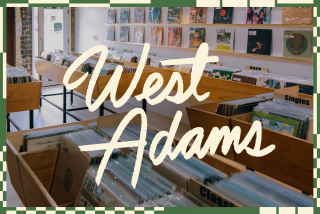Neff’s Coveted Designs Dot the Southland
At best you can only catch a glimpse of a few of the houses designed by the late architect Wallace Neff, but they are worth it.
Many of his sumptuous Spanish Colonial Revival-styled delights are hidden in Bel-Air, Beverly Hills and Santa Barbara behind clipped hedges or lush green foliage, high walls or ornamented wrought-iron fences.
Others a little more exposed sit back on well-manicured lawns in Pasadena and San Marino, their white stucco walls, low-pitched red tile roofs, graceful arches and deep-set windows and doorways proud examples of the preferred architectural style of the 1920s.
In the Oak Knoll section of Pasadena, an evocative Neff design peeks out from behind thick foliage at 1290 Hillcrest Ave. (Also on Hillcrest, at 1265 and 1275, are two other noteworthy examples of Spanish Colonial Revival-styled houses, both of which display the hand of architect Roland Coate.)
Better yet for from-the-street viewing, a few miles east in San Marino are stately Spanish Colonial Revival Neff designs at 1861 and 2035 Lombardy Road, executed in 1927 with characteristic regard for detail. Note the flamboyant but functional exterior stair at 1861.
For a little change of pace and style, Neff a year later and a few blocks away in San Marino designed two houses in an Italian Tuscan villa image, another popular form then. The houses are at 1883 and 2115 Orlando Road.
Also in the Italian style and more ambitious is a house Neff designed in nearby Sierra Madre in 1925 and that since has been converted into a convent. Located at the northeast corner of Michillinda and Highland avenues, the Mt. Alverno Convent was designed as a Tuscany villa, replete with a tower and an arcaded courtyard overlooked by colonnaded porches and well-detailed windows. Even the landscaping marked by tall cypress trees and grapevines looks Italian.
Though Neff flirted in his later years with various severe Modern styles, he kept returning to the more romantic styles and to San Marino. The house by him at 1173 San Marino Ave. was designed in 1948 in a French Norman style.
As duly noted and illustrated in a appropriately lavish new book, “Wallace Neff: Architect of California’s Golden Age” (Capra Press, Santa Barbara: $50), the Beaux-Arts-trained Neff had few equals when it came to executing a picturesque vernacular design.
The book was compiled and edited by Wallace Neff Jr., the architect’s son, and includes a text by Alson Clark and a forward by David Gebhard. The total makes for a fine armchair tour of Neff’s designs, but serves no further since none of the addresses of the houses are indicated. For that, I suggest “Architecture in Los Angeles,” a definitive guide by David Gebhard and Robert Winter (Peregrine Smith: $14.95).
As both books note, the Spanish Colonial Revival style and its rich Mediterranean and Moorish variations flowered in the 1920s--a time in Southern California of phenomenal growth and prosperity, paced by the booming oil, movie and real estate industries.
And it was Neff’s residential designs that gave much of that prosperity form. Among his clients were Douglas Fairbanks, junior and senior, Charles Chaplin and Paulette Goddard, Fredric March, Groucho and Harpo Marx, Daryl Zanuck, Louis Mayer and King Vidor. These and other movie personalities and moguls lent Neff the title, for a while, of “architect to the stars.”
During that time, Neff also designed houses for the less glamorous and merely wealthy, and a selection of church and commercial structures. His later practice, bending toward more popular needs and shifting tastes, would include designs in Modern and Ranch styles and some interesting experiments in low-cost housing. He died in 1982.
According to Jeff Hyland, a real estate broker and architecture buff specializing in estates and mansions, Neff’s creations are coveted and pricey gems.
And of course the Spanish Colonial Revival style, hinting of the region’s myths and moods, continues to be quite popular. Its modern and more modest variations serve well a current crop of singular houses, sprawling subdivisions and idiosyncratic condo complexes. But somehow for me the present, slick variations do not have the brio of Neff.






